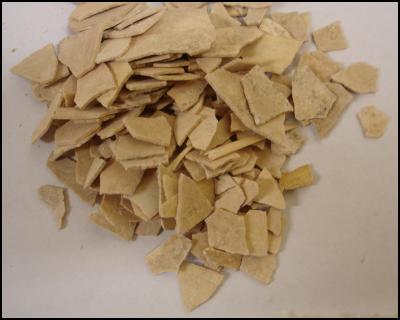Ancient DNA breakthrough boosts moa research
Wednesday 10 March 2010
Ancient DNA
breakthrough boosts moa
research

In a
world first, an international team of researchers, which
includes University of Otago archaeologists Chris Jacomb and
Richard Walter, has successfully isolated ancient DNA from
eggshells of extinct birds.
Their findings are published today in the prestigious UK journal Proceedings of the Royal Society B.
“Previous attempts to recover DNA from fossil eggshell have been unsuccessful,” explains lead author Charlotte Oskam, an Otago MSc graduate who extracted the DNA as part of her PhD research at Murdoch University in Australia.
Otago’s Chris Jacomb says that samples of moa eggshell from New Zealand archaeological sites are among the fossil eggshell used to successfully extract ancient DNA.
“This new ability to isolate ancient DNA from moa eggshell opens up exciting new research possibilities not just for palaeobiologists, but also for archaeologists,” Mr Jacomb says.
“Indeed, it was this potential to address important questions in New Zealand archaeology that drew Associate Professor Walter and me into this international collaboration.”
Being able to identify ancient moa DNA from archaeological samples provides a powerful new tool in understanding how the demise of moa occurred across New Zealand, he says.
“Not only can we now match eggshell to particular moa species, we can develop detailed models of hunting practice by looking at the family relationships of individual birds. This will help us understand hunting and extinction processes.”
In 2000, Mr Jacomb and palaeobiologist
Richard Holdaway gained international attention for
establishing the timing of moa extinction to within 150
years of human arrival, and the current work continues this
collaboration, he says.
Building on the new DNA eggshell
extraction methods, Mr Jacomb is leading a Marsden-funded
project on the interactions between Polynesian hunters and
moa, and the behavioural response of the hunters as the moa
became increasingly scarce.
By combining the DNA techniques with analysis of stable isotopes in archaeological bone and eggshell, and integrating these with radiocarbon timelines, the team will produce a detailed model of the interplay between hunting practices and effects on the ancient New Zealand environment.
ends


 Science Media Centre: Cyclone Gabrielle's Impacts On NZ's Ecosystems - Expert Reaction
Science Media Centre: Cyclone Gabrielle's Impacts On NZ's Ecosystems - Expert Reaction RNZ: Parts Of Power System Could Be Out For 36 Hours In Event Of Extreme Solar Storm
RNZ: Parts Of Power System Could Be Out For 36 Hours In Event Of Extreme Solar Storm NZAS: New Zealand Association Of Scientists Awards Celebrate The Achievements Of Scientists And Our Science System
NZAS: New Zealand Association Of Scientists Awards Celebrate The Achievements Of Scientists And Our Science System Stats NZ: Retail Spending Flat In The September 2024 Quarter
Stats NZ: Retail Spending Flat In The September 2024 Quarter Antarctica New Zealand: International Team Launch Second Attempt To Drill Deep For Antarctic Climate Clues
Antarctica New Zealand: International Team Launch Second Attempt To Drill Deep For Antarctic Climate Clues Vegetables New Zealand: Asparagus Season In Full Flight: Get It While You Still Can
Vegetables New Zealand: Asparagus Season In Full Flight: Get It While You Still Can 



